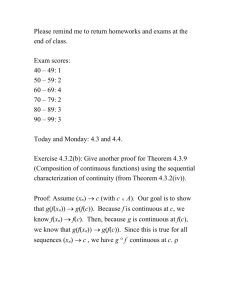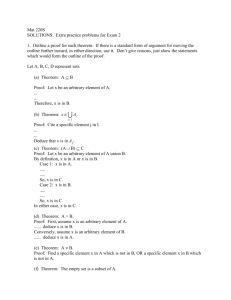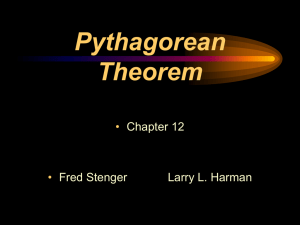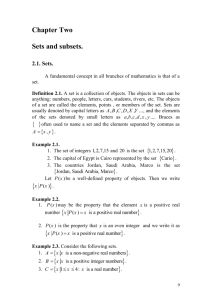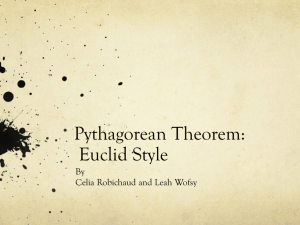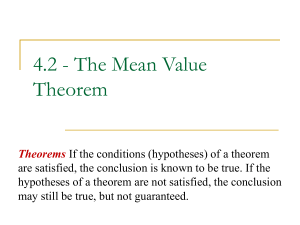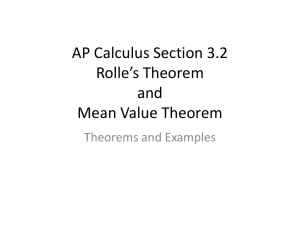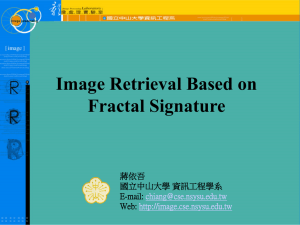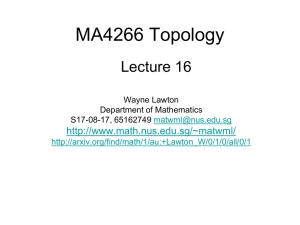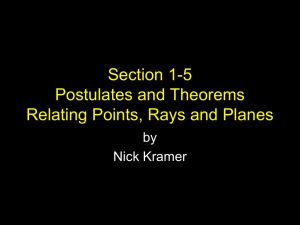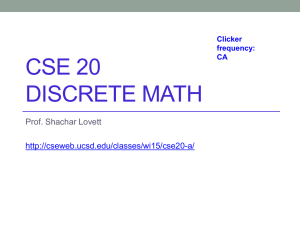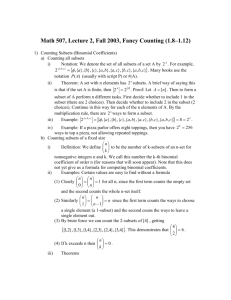Reading a Math Textbook
advertisement
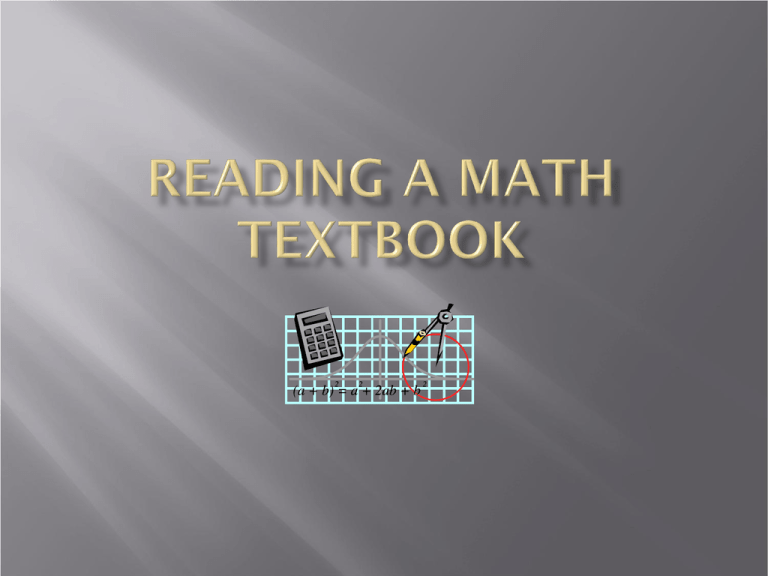
Before reading an assigned chapter, highlight all bold and italic words. Include these words and their definitions in a glossary in your notebook. Ask: What is the main topic? What does the author hope to accomplish in this chapter? What should I be able to do after reading and studying this chapter? Record the answers to these questions in your notes as you read. Set up a journal with three columns containing the headings: What I Already Know, What I Have Studied Before but Need to Review, What I Have Never Studied. New concepts (what you have never studied before) will require the most time and concentration as you read and study the chapter. Mathematics textbooks follow this pattern: statement, example, and explanation/summary. To identify and study the statement, students should read only the first title or subtitle and predict what will come next. Then read the first paragraph and write a short summary phrase in the margin or in your notes. Repeat this process for each paragraph. To study examples, begin by looking at the first line of the sample problem. Cover up the rest of the problem. Predict the next line of the problem. Check your prediction against the example. Then, examine and learn from the difference between your prediction and the example. For the explanation or summary, sample problems are often explained in the paragraph that follows. Work out the sample problem after reading the explanation. If a summary is given, paraphrase it in your notes. Before continuing with the chapter, work out a couple of problems that follow the example just given. Next, move on to the next section of the chapter. Read it and work out the problems. Include all steps. Check your answers, and if any are incorrect, go over the step to determine where you went wrong. Before class, students should review their textbook annotations, mathematical journals, and notes to find any concepts they do not fully understand. This will be the basis for classroom discussion of the assigned chapter. Students should create note cards while reading their math textbook. Creating these cards requires students to read, reflect on what they’ve read, and write the information in their own words. This demonstrates comprehension of the text. These cards can later be reorganized by related concepts for study purposes. The Question, Answer, Relationships strategy was developed to help students understand where basic mathematical concepts apply to the real world and how they connect to more sophisticated mathematical concepts. Begin with “Right There Questions.” These are based on information given in the problem. Next, “Think and Search Questions” require students to identify relationships between information provided and unknown information. Finally, students answer “On Your Own Questions.” They must identify prior knowledge and additional information needed to solve the problems. These types of questions make students aware of the different types of information provided in word problems and what areas they need to concentrate on while reading and studying. It is also helpful if the instructor provides guided practice at the beginning of the course and models responses to the questions. Then the students will learn to generate their own questions while reading (Campbell, Schlumberger, and Pate). As students progress through their college education, reading materials naturally become more difficult to comprehend and expectations for the level of the students’ understanding increase. The study methods and reading strategies necessary for understanding and learning from mathematics textbooks are very different from those involved in reading for other disciplines. 1. Theorems and proofs make up a large portion of advanced mathematics textbooks. In order to read and understand a theorem effectively, Ashley Reiter of the Maine School of Science and Mathematics suggests considering the following questions: “What kind of theorem is it? Is it a classification of an object, an equivalence of definitions, an implication between definitions, or a proof of when a technique is justified?” 2. “What’s the content of the theorem?” 3. “Why are each of the hypotheses needed? Can you find a counterexample to the theorem in the absence of each of the hypotheses? Are any of the hypotheses unnecessary? Is there a simpler proof if you add extra hypotheses?” 4. “How does this theorem relate to other theorems? Does it strengthen a theorem you’ve already proven? Is it an important step in the proof of some other theorem? Is it surprising?” 5.” What’s the motivation for the theorem? What question does it answer?” The easiest way to read a proof is to check that each step follows from the previous steps. Once you’ve read a theorem and its proof, you should do the following to synthesize your understanding of the theorem and proof. 1. Write a brief outline demonstrating the logic of the argument. 2. Answer the question: “What mathematical raw materials are used in the proof?” 3. Also answer, “What does the proof tell you about why the theorem holds?” 4. Finally, answer the question: “Where are each of the hypotheses used in the proof?” (Reiter) Employing the above strategies can improve your understanding and utilization of the information presented in your college mathematics textbooks. Campbell, Anne E., Schlumberber, Ann, and Pate, Lou Ann. Promoting Reading Strategies for Developmental Mathematics Textbooks. 28/12/11. http://www.umkc.edu/cad/nadedocs. Reiter, Ashley. Helping Undergraduates Learn to Read Mathematics. 28/12/11. http://www.maa.org. The following link provides examples of annotating your math textbook and combining lecture notes with the book. Reading a Math Textbook (PDF File)




